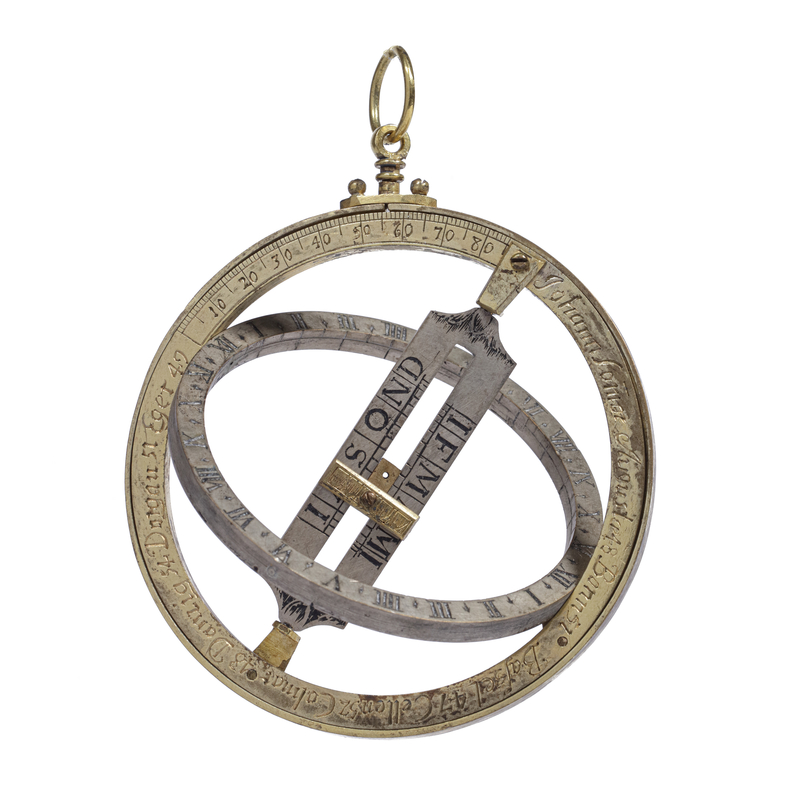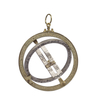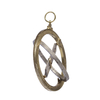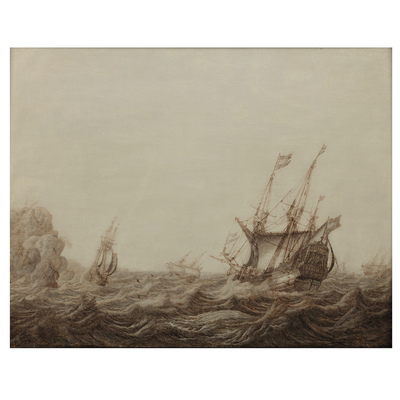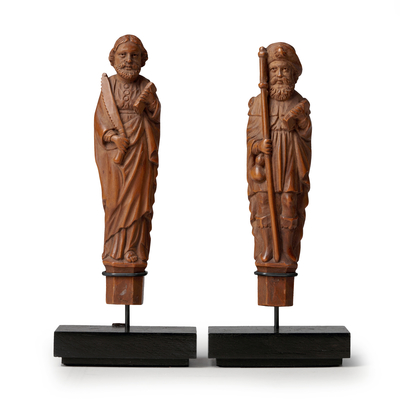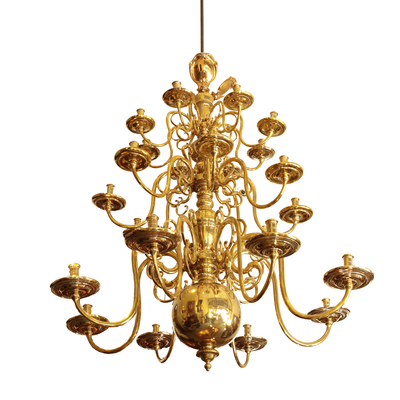Universal equinoctial ring dial, Johann Sommer
Global shipping available
- Origin
- Augsburg, Germany
- Period
- Dated 1648
- Material
- Gilt brass, silver
- Diameter
- 7.2 cm
- Literature
J. Abeler, Meister der Uhrmacherkunst, Wuppertal 2010, p. 531.
A. Turner, Mathematical instruments in the collections of the Bibliothèque Nationale de France, Londen 2018, p. 201.
E. Zinner, Astronomische Instrumente des 11. bis 18. Jahrhunderts, München 1967, pp. 117 119, 538.- Museums
See collection of the Adler Planetarium (inv. no. A-166) and collection Science Museum Group London (inv. no. 1939-398) for similar ring dial by Johann Sommer.
Questions about this object?
Please use one of the contact options below:
Description
This fire gilded brass and silver ring dial is made and signed by Johann Sommer, Augsburg. The universal equinoctial ring consists of four parts: a suspension which can be adjusted according to the degree of latitude, a meridian ring with degrees of latitude from 0 to 85, a rotating equator ring with 24-hour indication (two times I-XII) and an engraved central bridge with a sliding lens. The ring dial can be used at different latitudes and is therefore referred to as universal. When in use, the correct latitude is first determined, with the aid of the indicated cities and latitudes on the meridian ring and the equator ring, after which the suspension is set to the right latitude. Then the equator ring is folded down and the movable lens of the central plate is set to the right month or constellation. The sun falls through the lens onto the hour ring and thus indicates the correct time.
The universal ring dial is also called a 'travel sundial', because when it is folded up, it is easy to take with you. The meridian ring is signed 'Johann Somer Augusta 48'. Johann Sommer came from an Augsburg family who specialised in metalwork as well as clocks and watches. He was born on 2 June 1608, married on 4 February 1634 and died sometime after 1666.
For a similar universal equinoctial ring dial by Johann Sommer, see the Adler Planetarium collection, inv. no. A-166 and collection Science Museum Group London, inv. no. 1939-398.
